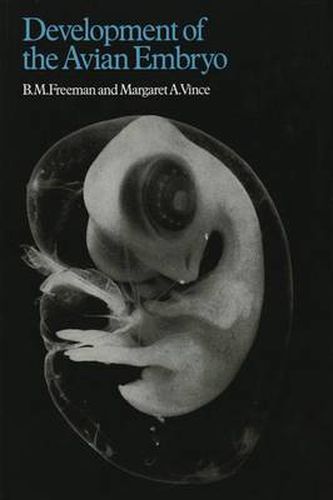Readings Newsletter
Become a Readings Member to make your shopping experience even easier.
Sign in or sign up for free!
You’re not far away from qualifying for FREE standard shipping within Australia
You’ve qualified for FREE standard shipping within Australia
The cart is loading…






This title is printed to order. This book may have been self-published. If so, we cannot guarantee the quality of the content. In the main most books will have gone through the editing process however some may not. We therefore suggest that you be aware of this before ordering this book. If in doubt check either the author or publisher’s details as we are unable to accept any returns unless they are faulty. Please contact us if you have any questions.
In this book we have described the major events of embryonic development and considered the underlying mechanisms which result in the production of a viable hatchling. We have, as the subtitle of the book indicates, con centrated on behavioural and physiological topics: it is not our purpose to consider the early embryology of the bird - which is adequately covered by other texts - but we have included morphogenetic information where appropriate. The form of the book was dictated by a belief that interest in this aspect of development is not confined to embryologists, biochemists and physiolo gists. Therefore after describing the conditions in which the egg normally develops we have considered first the whole embryo: what it is like at different stages, what it does, how it gets from one position to another within the shell and how, later, it comes to interact with the wider environ ment of the nest. Only after this have we considered the development of the nervous and sensory mechanisms on which this transformation depends and on the problem of the level of behavioural maturity with which the chick emerges from the egg. With the main lines of development described we have, in the second part of the book, turned to a detailed consideration of the physiology of development: ranging from what may be conveniently described as the ‘life-support’ systems - gaseous exchange, provision of energy, etc. - to the of hormones in avian development.
$9.00 standard shipping within Australia
FREE standard shipping within Australia for orders over $100.00
Express & International shipping calculated at checkout
This title is printed to order. This book may have been self-published. If so, we cannot guarantee the quality of the content. In the main most books will have gone through the editing process however some may not. We therefore suggest that you be aware of this before ordering this book. If in doubt check either the author or publisher’s details as we are unable to accept any returns unless they are faulty. Please contact us if you have any questions.
In this book we have described the major events of embryonic development and considered the underlying mechanisms which result in the production of a viable hatchling. We have, as the subtitle of the book indicates, con centrated on behavioural and physiological topics: it is not our purpose to consider the early embryology of the bird - which is adequately covered by other texts - but we have included morphogenetic information where appropriate. The form of the book was dictated by a belief that interest in this aspect of development is not confined to embryologists, biochemists and physiolo gists. Therefore after describing the conditions in which the egg normally develops we have considered first the whole embryo: what it is like at different stages, what it does, how it gets from one position to another within the shell and how, later, it comes to interact with the wider environ ment of the nest. Only after this have we considered the development of the nervous and sensory mechanisms on which this transformation depends and on the problem of the level of behavioural maturity with which the chick emerges from the egg. With the main lines of development described we have, in the second part of the book, turned to a detailed consideration of the physiology of development: ranging from what may be conveniently described as the ‘life-support’ systems - gaseous exchange, provision of energy, etc. - to the of hormones in avian development.